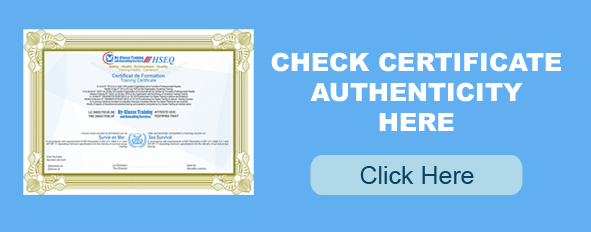understand:
- Importance of an effective safety program
- How to communicate safety in the work place
- Duties of the safety manager
- Personal protective equipment
- Promoting safety accountability
- Introduction to OSH, Safety meetings, Accident investigations, Evaluation of a subcontractor safety and health program
Those who will benefit from the training:
This training on building a safe work culture is of great importance to managers, supervisors, directors, Safety managers, Safety supervisors, Security officers, Safety officers, Health and safety committee members and new hires. they will find it rewarding and resourceful with regards to building a safety culture at work
Duration:
The building a safe work culture culture has a duration of 3 days With a ratio of 30% theory to 70% practical. These include classroom presentations, exercises, discussions and videos. Participants will get involve in exercises of developing a program to improve the safety culture of personnel at job site. this training can be organised in our Cameroon office, chad, congo, Gabon, equatorial Guinea or on site upon client request
Pre-requisite :
There are no pre-requisite this basic fire fighting training, however, it is recommended that participants be able to speak and write basic English or French
COURSE OUTLINE
Elements of an Effective Safety Program
- Commitment of management
- Health and safety Policy
- Health and safety planning,
- Health and safety policy implementation, monitoring and auditing
Communicating Safety in the Workplace
- Communication
- Critical elements
- Sub-contractor relationships
- Communicating safety requirements
Duties of the Safety Manager
- Participation
- Leadership qualities
- Compliance guidelines
Personal Protective Equipment.
- Importance of PPE
- Operating procedures
- General requirements
Promoting Safety Accountability
- Safety integration
- Evaluation of performance
- Supervision
Introduction To Occupational Health and Safety Why there is OSH
- OSH acts,
- Role of OSH Standards development
- Record keeping rules and Purpose
- What has to be reported
- Employer responsibility
- General safety Cost of accidents
Safety Meetings and Training
- Safety meeting components
- Role of management/employees
- Safety training programs Evaluation
Accident Investigations
- Why and when to investigate accidents
- 4-step process investigation
- Basic and root causes
- Safety controls and findings
- Reporting
Evaluation of Subcontractor Safety Program.
- Evaluation requirement
- Analyzing documentation
- Safety audit
- Hazard control and effective communication
Register for this Course





